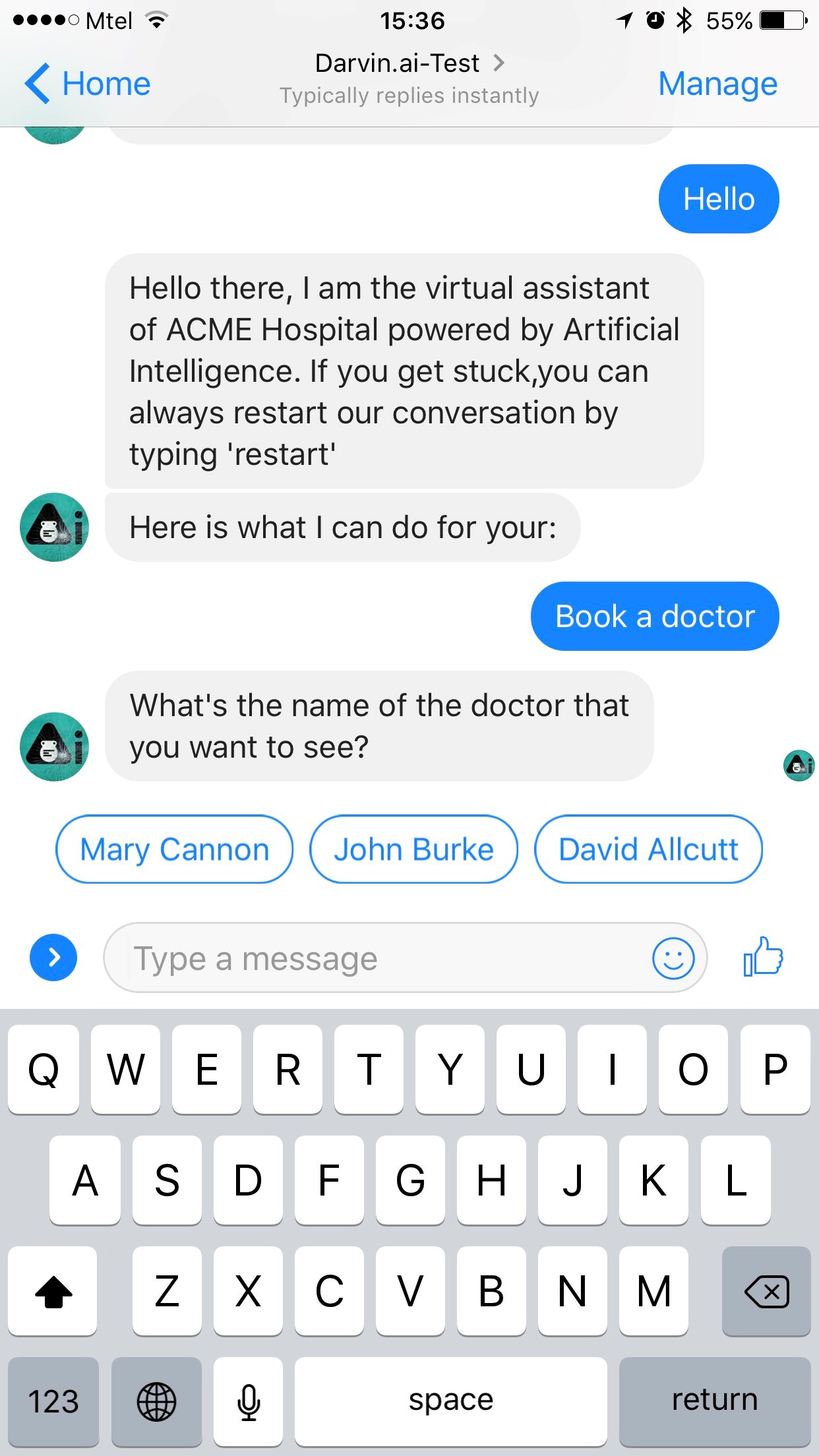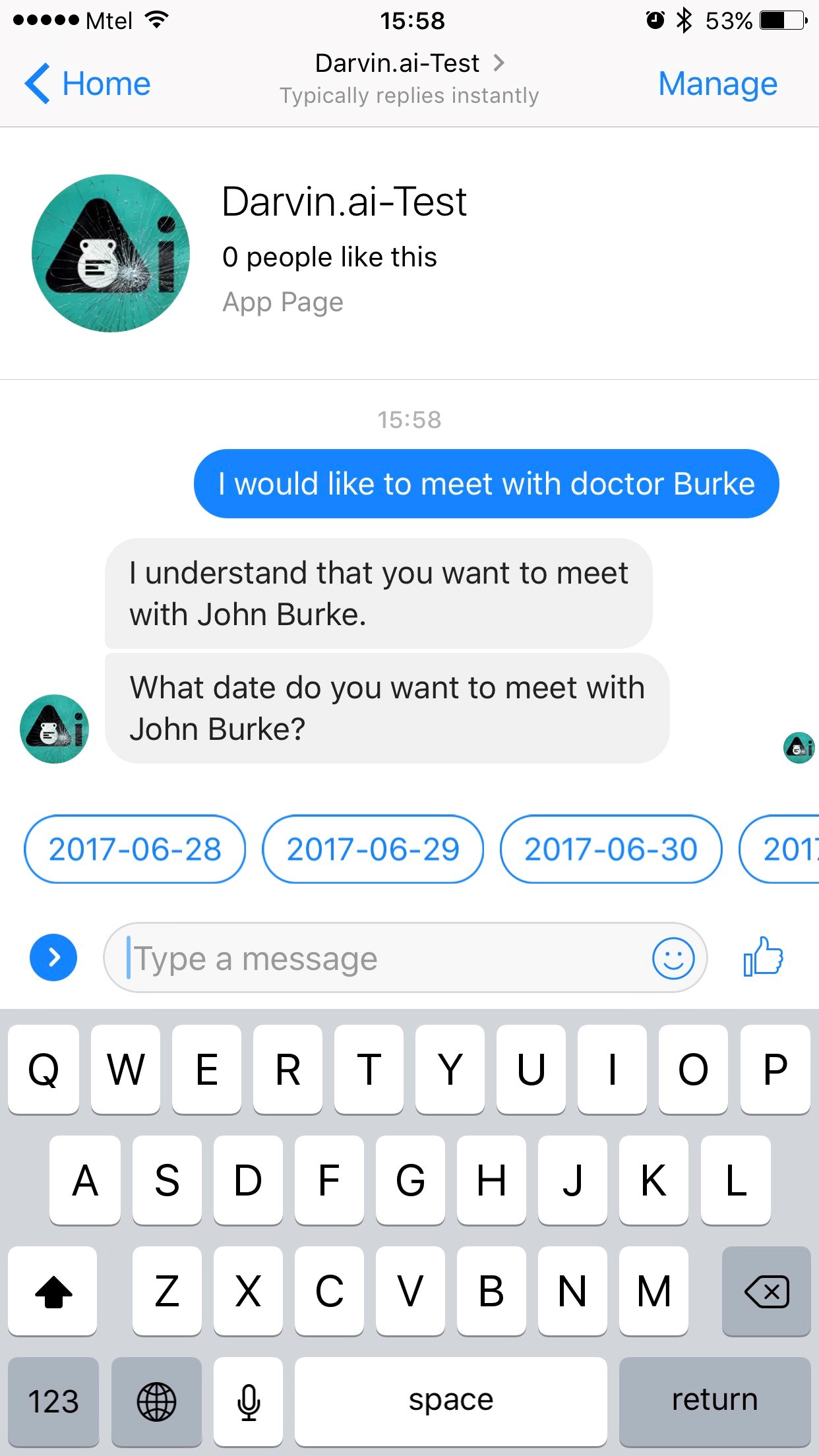Chatbot Design Best Practices
Do’s and don’ts when implementing chatbots with NativeChat.
Designing a conversational experience requires a set of best practices that go beyond the natural language understanding and personality of your chatbot. You will need to account for unexpected scenarios, interruptions, ambiguities and other situations that are the norm when having a conversation in real life.
When we started creating NativeChat, a platform for building chatbots, we decided to follow an opinionated approach that leads chatbot developers through a set of best practices. Let’s take a look at what we deem important as best practices in designing state of the art conversational experiences.
Bot Introduction
Your welcome message is designed to help your users understand that they will be talking to a chatbot, and it’s one of the most important messages.

Introduce the bot
Always make it clear that the user is talking to a chatbot and not a real human. This is important as it sets the expectations - a human would expect different kinds of response and intelligence if they know they are talking with another human vs. a bot.
List what your bot can do
Your welcome message is the place to list all options that your bot can do so that users don’t spend time trying to engage in a conversation that your bot doesn’t support.
Avoid making the bot a strong personality
You might find it good idea to make your bot to sound funny, smart, compassionate or give it any other human-like personality trait. But people will quickly stumble upon situation where this feels inappropriate and sounds fake. No matter how your brand is usually perceived, try to make your bot sound professional, objective and as neutral as possible.
Avoid setting a gender
Making your bot sound gender neutral is the best option. It allows users to focus on the activity that they are doing instead of drawing too much attention to the character.
Conversations
The majority of the platforms for building chatbots are allowing you to do some kind of intent training as part of their natural language understanding. However, intents are too granular and make it hard for you to design a meaningful conversation. That is why in NativeChat, we have broken the training into two:
-
Conversation training that will help your chatbot identify the correct conversation that needs to be started with the user.
-
Entity training that will teach your bot to recognize Entities from a conversation with a user.
Thus, imaging your chatbot as a set of conversation is a much simpler way to design your chatbot. Also, each conversation usually matches to an existing process your users are already doing either in a mobile app, website or through email.
Deal with interruptions
The user might change his mind about an input he just entered, or he might want to completely change the topic of conversation. Ensure that your chatbot can deal with such interruptions, rather than pushing the user in a fixed decision tree that he needs to follow.
Do not sound robotic
When you talk to a person, it’s rarely that he uses the same words and sentences to interact with you. Make sure that you make the conversation natural sounding by including multiple synonymous messages that the bot can choose from when replying to the user.
Provide suggestions
The majority of the channels that support chatbots such as Facebook, Viber and Slack, provide some kind of quick replies or options that can facilitate the user when making a decision. Ensure that you are using them to enrich the conversational experience.

static definition of quick replies entered manually, or dynamic definition retrieving the options from a web service.Inform your users what the bot understands
Natural language processing helps you understand what your users want to do, and also extract entities from the conversation. However, it’s important that you keep the user informed on what the bot actually understood.

acknowledgments messages that will be used only when the bot identifies the entity without explicitly asking for it. For example, if the user starts the conversation with a message, and the bot identifies an entity (let’s say doctor), it will send the acknowledgment messages for the doctor entity to the user.Deal with ambiguities
There are cases where a bot can identify multiple values for a given entity. For example, imagine there is a chatbot for booking doctor appointments, and the user sends the following message “Is Dr. John Burke or Dr. Stan Smith a better doctor?”. Unless your bot has a conversation about comparing doctors, it will need to clarify for which doctor the user wants to book an appointment.
ambiguity setting for each step in a conversation. That is how your chatbot will automatically present the user with quick replies to identify the correct user input.Remind your users before you lose context
There will be times when your users abandon a conversation. The next time the user engages with your chatbot, the practice is that you will begin the conversation with the user where it was left off, or you will have some expiration time for your conversation session.
But both approaches are not optimal. If the user returns in 2 weeks, he will never want to continue a 2 weeks old conversation. On the other hand, an expiration for your session with the user is a better option, but it’s tricky to guess the correct expiration length in minutes. That is why we recommend actually asking the user whether he wants to continue his session 30 minutes after his last message. This draws attention to your chatbot if the user got distracted, and keeps him in control.
Lack of Understanding
Regardless of how many conversations and entities you trained your chatbot to understand, there is always a chance that things will go wrong. There are several must-have scenarios that you need to support outside the regular conversations of your chatbot.
Give instructions how to start over
Ensure that your bot provides an option to restart the conversation so that they don’t feel trapped.
restart conversation in every NativeChat chatbot. You can define multiple expressions (e.g. Reboot, restart, start over etc) from Bot Memory > Training > Conversation > restart.Make it easy to talk to a human
It’s often necessary to hand off the conversation to a person. Ensure that this option is available for your users, and your chatbot stays silent while the operator and the user are continuing the conversation.
stay-silent and silence-timeout settings for every chatbot in NativeChat that you can use to mute your chatbot until the operator resolves an issue with the user.Handle technical issues
Building a smart chatbot that pulls dynamic data from web services is always exposed to the risk of а failing service call. Ensure that you have a good error handling on all dynamic services that will keep the user informed if things fall apart.
general-failure setting for each chatbot that will be used when it encounters experiences technical problems.Be clear when the bot doesn’t understand
Until your chatbot gains enough training data, there will be scenarios where your chatbot won’t understand all of your intents. If you are using a standard message such as “I am not sure I understand what you said.” avoid sending it more than 3 consecutive times, and direct the user to an operator instead.
Somethings missing or not clear?
Ask a question in our community forums or submit a support ticket.